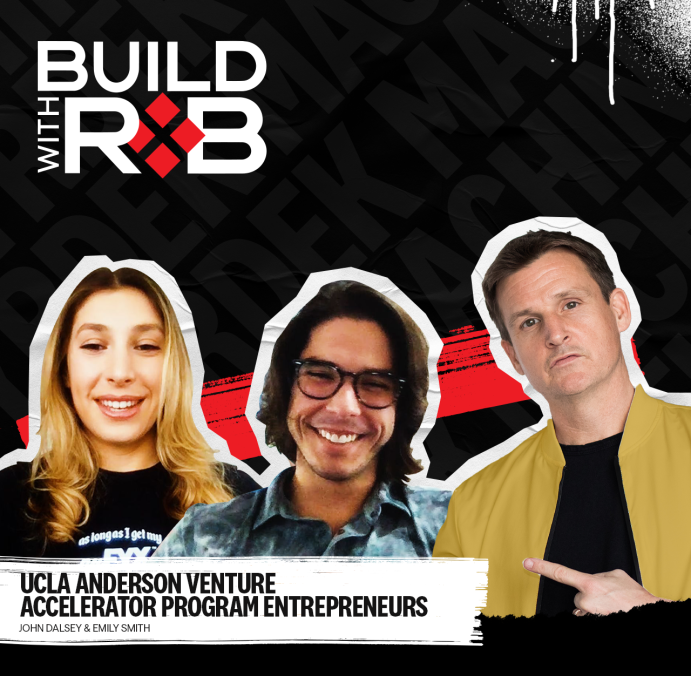
It’s far too easy to fall into the trap of only bouncing your ideas off of people you know will either agree with you or be supportive no matter what. This is great for short-term confidence but potentially detrimental to achieving long-term success by building a sustainable business. The more feedback you get from all types of people, the better you can hone in on the true value proposition of your product, and thus understand who your customer will eventually be. Rob implores you to get as much feedback as possible in the IDEA stage before you spend a dime, micro-failing over and over until your idea is undeniable. And then never stop getting feedback through every subsequent stage. This doesn’t mean that you need to please everyone, but commonalities will emerge that will give you crucial insight into how to evolve next. On this episode, we once again welcome two fantastic entrepreneurs from the UCLA Anderson Venture Accelerator program


 John Dalsey and Emily Smith are UCLA Anderson Venture Accelerator Program Entrepreneurs.
John Dalsey and Emily Smith are UCLA Anderson Venture Accelerator Program Entrepreneurs.
John Dalsey started working in a brewery in New Jersey, earning his keep from the bottom on up through hard work and dedication. Through that process, he learned the alcohol business. It was later that he and his best friend became bored with the limited flavor selection in the hard seltzer craze and decided to create the first Asian-inspired flavors in the category. Thus, Nectar was born, with a focus on not only taste, but content creation.
Emily Smith put TASTE over everything for her pea-based protein powder, nuFYX. Launched during the pandemic, nuFYX became the #1 selling plant-based protein at Erewhon market in Los Angeles (which if you don’t live there, is a VERY fancy health-focused grocery store with six locations around the city). Besides tasting great, it incorporates aminogen, an enzyme to help break down protein, making it easily digestible.
 BUILD WITH ROB
BUILD WITH ROB

